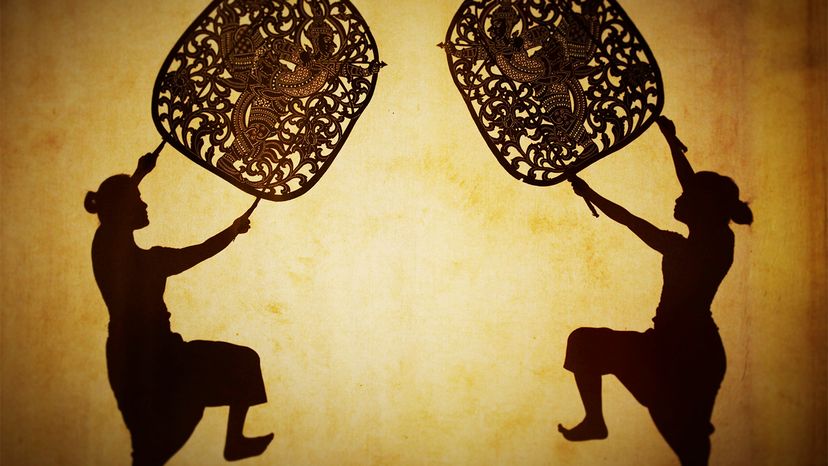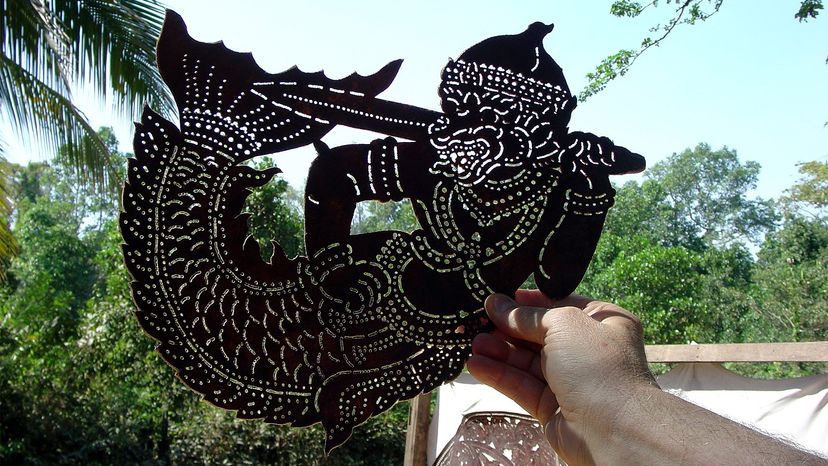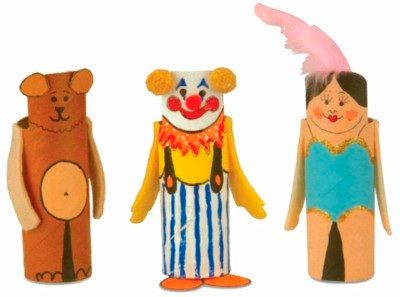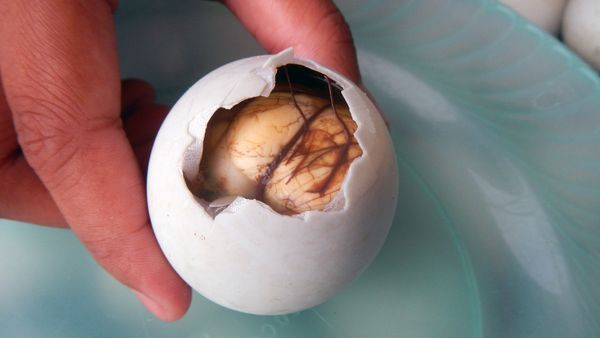However, the rise of the Khmer Rouge (and its dictatorial leader, Pol Pot) and the subsequent genocide between 1975 and 1979 dealt a heavy blow to artisans (like shadow puppet makers and performers), who became a target of the authoritarian state. An estimated 80 to 90 percent of the country's artists were killed through torture, starvation, overwork and other methods.
"During the Khmer Rouge the performing arts of Cambodia, including most of the artists, were wiped out. Puppetry was no exception — most of the puppeteers and many of the puppets were destroyed," says Goodlander. For those who survived the genocide, it took many years to revitalize the Cambodian arts scene and traditional cultural practices that were lost. Goodlander cites the example of a performance troupe at Wat Bo, a Buddhist pagoda in Siem Reap — where puppet performances still take place today.
"Wat Bo was founded in 1992 by the Venerable Preah Moha Vimalakdharma Pin Sem (Venerable Pin Sem), who stated, 'We believe that the arts is the spirit, soul and wealth for the nations, for all nations in the world," Goodlander says.
The Venerable Pin Sem, while living in a Thai refugee camp in 1992, realized the small puppet theater arts were disappearing. So, he made it his mission to revitalize this vibrant piece of Cambodian history.
"Artwork within the walls of the wat, together with childhood memories, provided insight into how sbeik thom had been performed in the past. The Venerable Pin Sem invited 25 other monks to join him when in 1993 the group relocated to the temple Wat Bo," says Goodlander.
"Historically, performances could last up to seven nights, but today there is no one who remembers how to execute the longer performance."
Apart from local festivals and holidays, Cambodian shadow puppetry mainly draws attention from foreign tourists today. But Cambodian organizations are trying to re-engage the Cambodian public with this unique artistic tradition, even bringing together different groups to discuss how to better promote the performances and make ticket prices more affordable for locals.
"Locally — the performances suffer because Cambodian audiences have become disconnected from this past," Goodlander says.
UNESCO designated shadow theater an invaluable spot on its Representative List of the Intangible Cultural Heritage of Humanity in 2005, but interest in the practice has dwindled in the years since its declaration.
A handful of groups still practice shadow puppetry in Cambodia, particularly arts and theater organizations promoting Khmer culture, such as Cambodian Living Arts, Sovanna Phum Art Association (also known as Sovannaphum), Bambu Stage, and Bonn Phum, which is trying to keep the performance art alive through social media and an annual festival.
But the COVID-19 pandemic in 2020 devastated arts and performance organizations worldwide, and Cambodia is no exception. Reuters reported that the emergence of COVID-19 forced Sovanna Phum — which had performed for 26 years and was run by legendary Cambodian artist Mann Kosal — to temporarily close in the wake of the pandemic.
But if Cambodia can retain its artistic traditions in the face of a modern, post-COVID world, the country may be in for a cultural renaissance, similar to what happened during the pre-Khmer Rouge "Golden Age" of the 1960s.
"Before the Khmer Rouge, Cambodia had an incredibly diverse and active scene in many kind[s] of performance ... and I believe that will happen again," says Goodlander.



